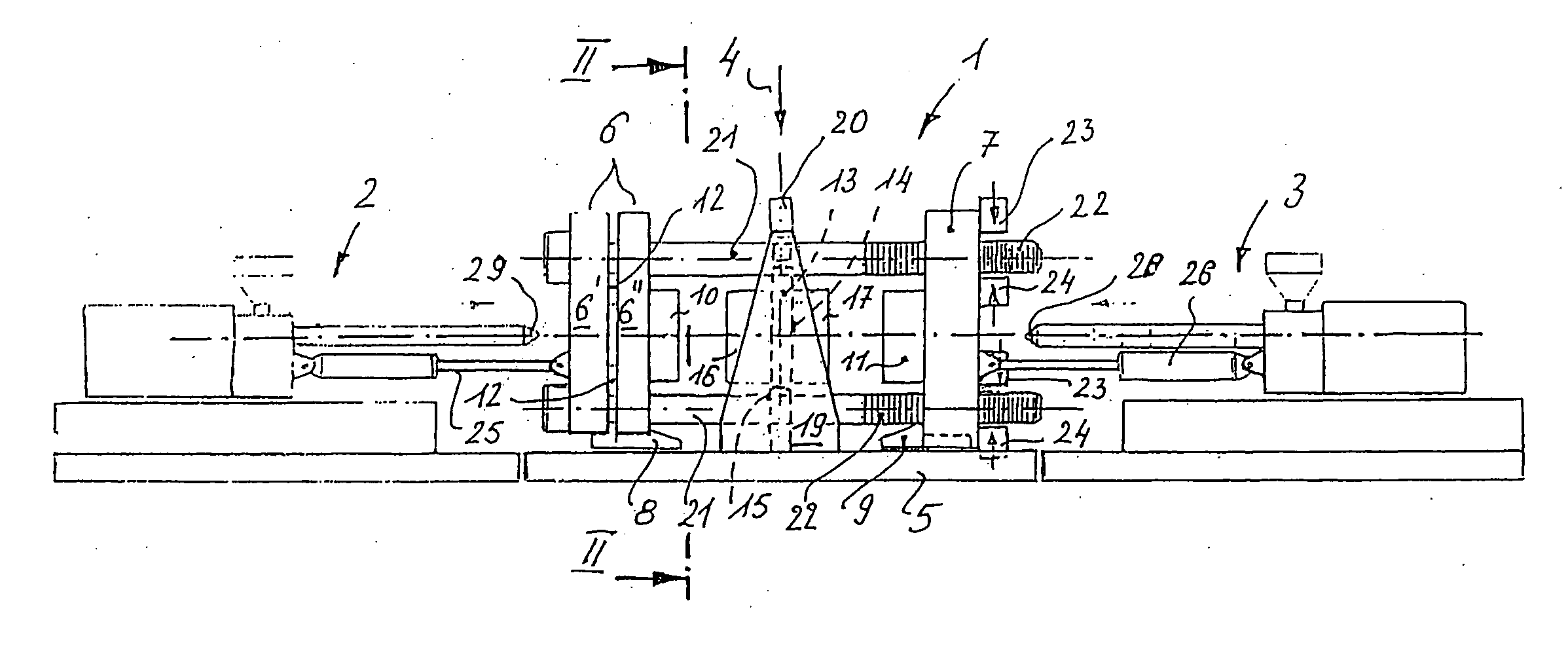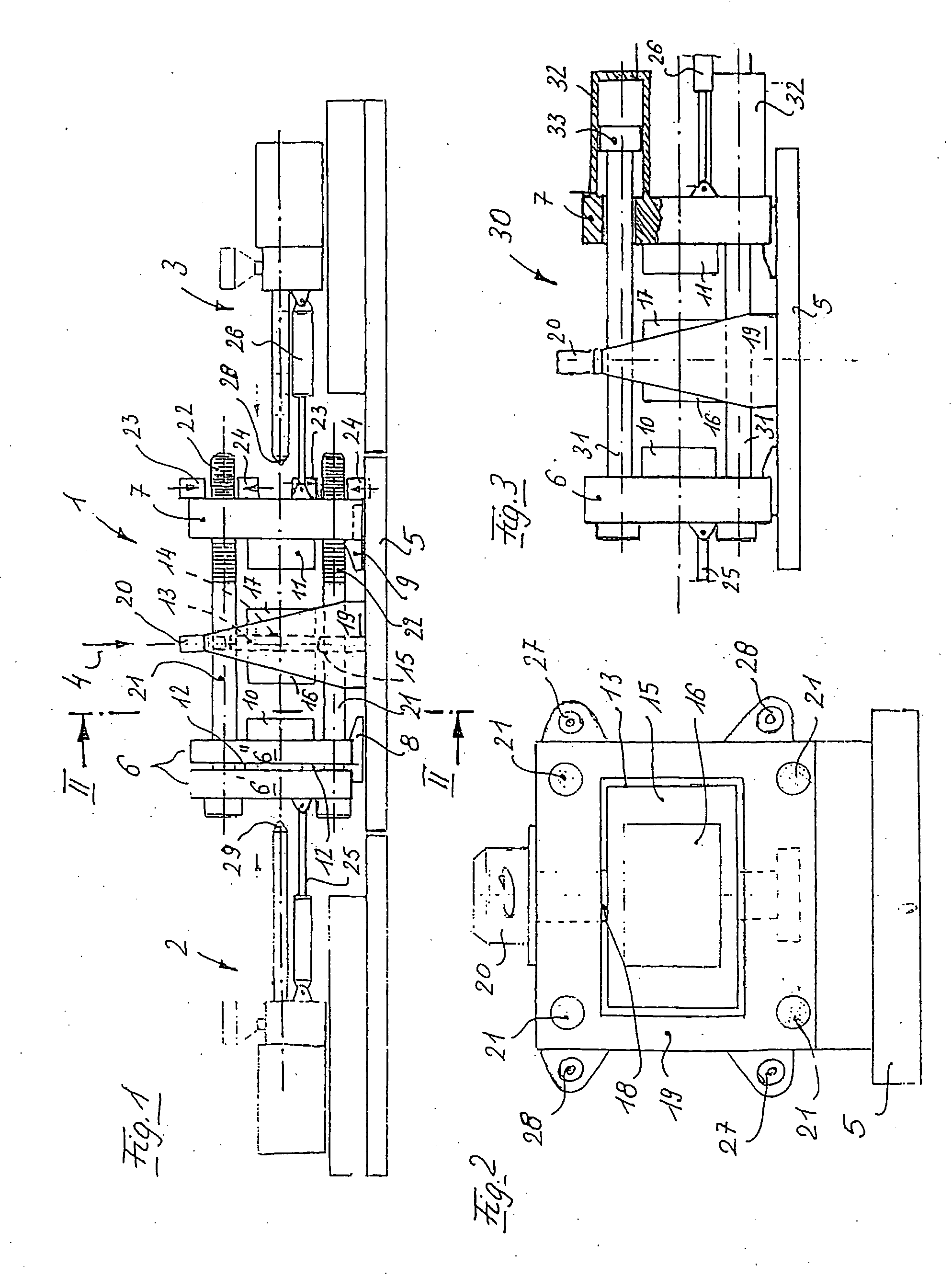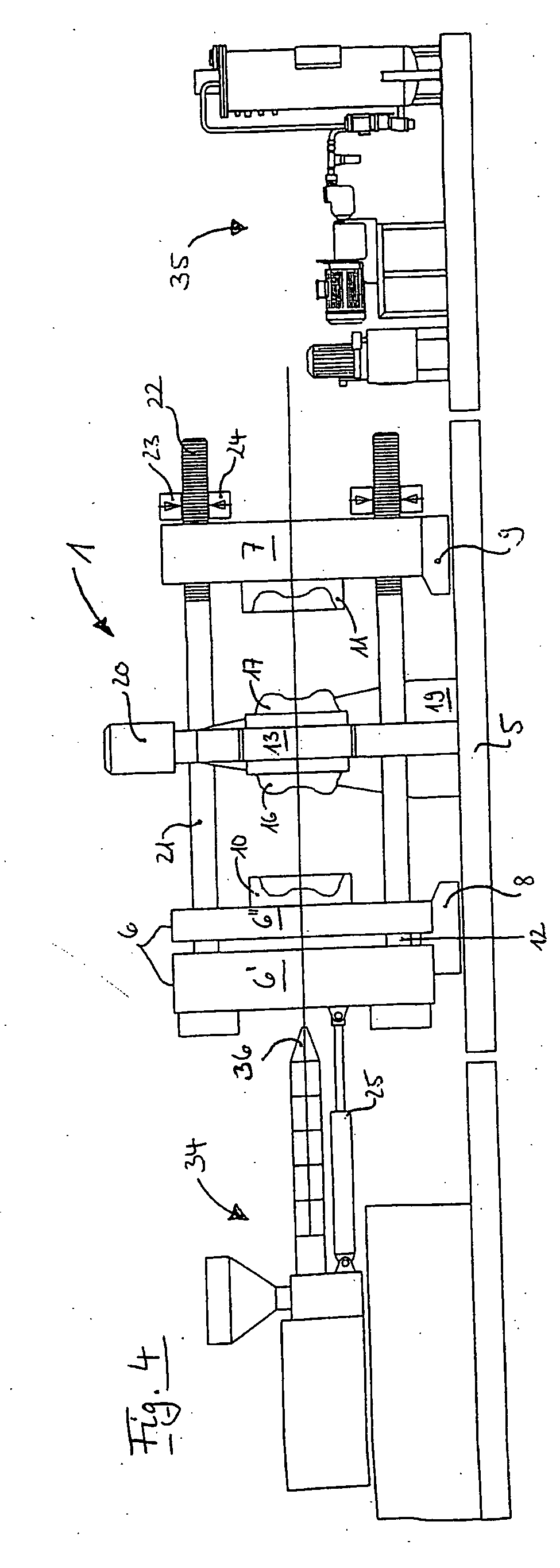Mold closing device for an injection molding machine
a technology of injection molding machine and closing device, which is applied in the direction of dough shaping, application, manufacturing tools, etc., can solve the problems of inability to maintain the parallelism between the plate and the machine frame stationary outer mold mounting plate, disadvantages, and inability to accurately close the unit, etc., to achieve short construction, increase compressibility, and reduce the effect of stiff system
- Summary
- Abstract
- Description
- Claims
- Application Information
AI Technical Summary
Benefits of technology
Problems solved by technology
Method used
Image
Examples
Embodiment Construction
[0031] Throughout all the Figures, same or corresponding elements are generally indicated by same reference numerals. These depicted embodiments are to be understood as illustrative of the invention and not as limiting in any way. It should also be understood that the drawings are not necessarily to scale and that the embodiments are sometimes illustrated by graphic symbols, phantom lines, diagrammatic representations and fragmentary views. In certain instances, details which are not necessary for an understanding of the present invention or which render other details difficult to perceive may have been omitted.
[0032] Turning now to the drawing, and in particular to FIG. 1, there is shown an injection molding machine with a mold closing device 1 and two injection units 2 and 3. Arrow 4 indicates schematically the injection axis of a third optional injection unit which can be provided on the injection molding machine in a so-called T-arrangement.
[0033] The mold closing unit 1 inclu...
PUM
| Property | Measurement | Unit |
|---|---|---|
| areas | aaaaa | aaaaa |
| structure | aaaaa | aaaaa |
| pressure | aaaaa | aaaaa |
Abstract
Description
Claims
Application Information
 Login to View More
Login to View More - R&D Engineer
- R&D Manager
- IP Professional
- Industry Leading Data Capabilities
- Powerful AI technology
- Patent DNA Extraction
Browse by: Latest US Patents, China's latest patents, Technical Efficacy Thesaurus, Application Domain, Technology Topic, Popular Technical Reports.
© 2024 PatSnap. All rights reserved.Legal|Privacy policy|Modern Slavery Act Transparency Statement|Sitemap|About US| Contact US: help@patsnap.com










